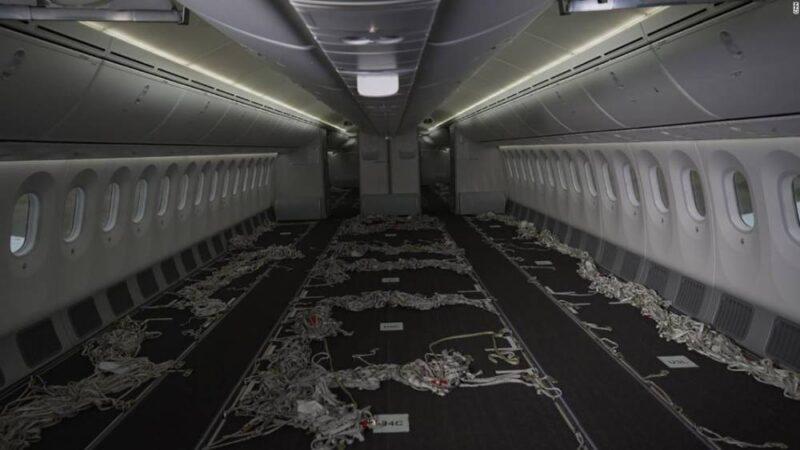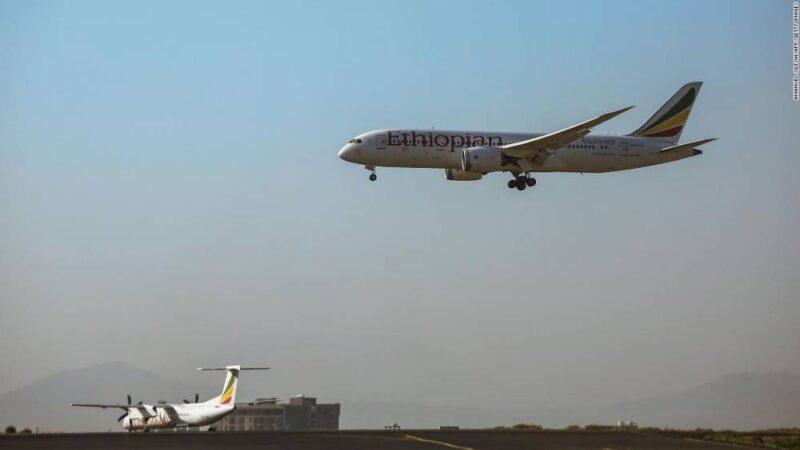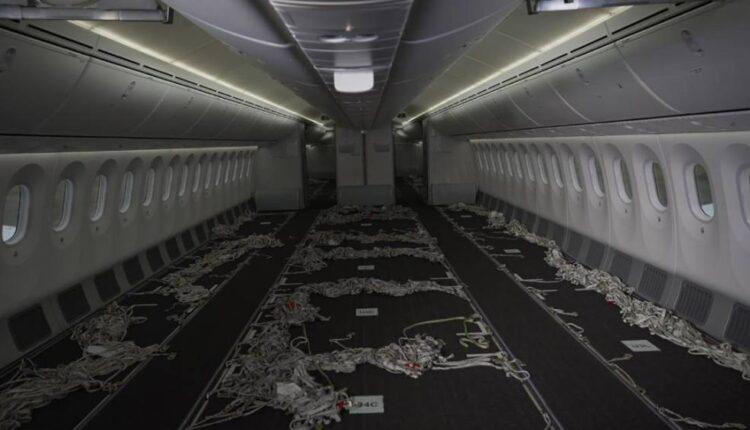Nairobi (CNN Business)While passenger air travel has plummeted during the pandemic, demand for air cargo has surged. With e-commerce up and trucks often unable to cross borders, air freight became a global lifeline transporting medical supplies and personal protective equipment, as well as all kinds of everyday products.
According to the International Air Transport Association, in June this year African airlines increased freight volumes by 33.5% compared to the same period in 2019 — a bigger increase than anywhere else in the world. CNN Business spoke with Allan Kilavuka, group managing director and CEO at Kenya Airways, from inside what he calls “the world’s first cargo-converted Dreamliner 787,” about how the airline has pivoted to meet this market shift. The following interview has been edited for clarity and length.
How did Covid-19 impact your business?
Kilavuka: Kenya Airways is one of the largest operators within Africa. Last year, like all other airlines, we suffered a significant drop in numbers. Before 2020, we were flying approximately 5 million passengers per year, 2019 being the record year. In 2020, which was the year that we suffered the pandemic, it dropped to about 1.8 million. So a significant drop and those numbers are reflected in our revenue numbers and subsequently our losses. Read MoreWe also used to fly to 53 destinations across the world — that dropped to 41 but we hope to scale it back up a little bit more. Within Africa, we used to fly to over 40 destinations. That again has dropped to currently 36 destinations. Some we need to reactivate and see how that grows going forward.

The inside of Kenya Airways cargo-converted Boeing 787 Dreamliner at Jomo Kenyatta International Airport, Nairobi, Kenya, on July 6.How has the airline responded to the growing demand for air cargo?Kilavuka: Until now cargo has been about 10% of our business. We want to grow that to over 20% of our business, to double it within the next three to five years. And in order to do that, we need to increase capacity.

Africa must remove barriers to flying to secure post-pandemic boom, says IATA regional execSo right now we are sitting in the world’s first cargo converted Dreamliner 787. This one we have dedicated to cargo — this and another one like this. We have at least 50 tons of cargo in this one “preighter” [a passenger plane converted to carry freight] that helps transport mainly horticulture products to Europe, meat to the EU, crabs to China and so on. And then of course, to import certain items from Europe and Asia to Africa. So cargo is extremely important in our strategic framework because of the role it will play in the bigger Kenya Airways business endeavors. Why? Because first of all, we think this is a good revenue stream for us. Secondly, it diversifies our portfolio a little bit more, so it safeguards our business. Thirdly, it supports businesses within Africa, which is what we’re about. We’re about sustainable development within Africa. So we want to play our part in helping and supporting businesses to export their products. According to the African Airlines Association, domestic travel provided up to 61.5% of passenger flights for African airlines during the pandemic. How much of your focus is on boosting Africa and intra-Africa connectivity?

Kenya Airways CEO Allan Kilavuka.Kilavuka: 60% of our traffic is within Africa. And we intend to continuously grow that because we are predominantly an African airline and that’s how we want to position ourselves, because we believe there’s a lot of potential on the continent. So there are several phases that we will undertake. First of all, it’s to reinstate our original network. The ambition is to then expand into secondary cities, because we fly to most primary cities, to most capital cities. Now it’s to look at players that will help us to go into secondary cities that make sense for the business. Also, looking for opportunities for “fifth freedom flights” [flying between two foreign countries] … so that we can collect more traffic. This we can do either directly or through partnerships.Aside from cargo, how has the pandemic reshaped your business model?Kilavuka: Covid-19 has completely changed the way we look at things. The customer is demanding different things now. They are more concerned about health and hygiene, so we’re taking extra measures to make them feel comfortable when it comes to that aspect of the business.

Can a motorcycle-hailing company create an African super app? Secondly, they want a more flexible booking process and that’s what we’ve done as well. They want more digital space and so on and so forth. So really, we’re looking at the customer more and tailoring our product to match their needs.
There are also other revenue streams. We’ve launched a drone initiative. We’re working very hard at it. We think we have a very strong value proposition, especially because we have a lot of experience. We have over 44 years of experience in manned aircraft — we want to transfer that experience from manned aircraft to unmanned aircraft and offer a very valuable service to operators, not just within Kenya, but outside Kenya.We want to do a lot of surveillance, surveillance support, inspections and even light cargo deliveries. So we are working on commercializing this unit. We think that in five years’ time, it will be a significant portion of our business.
Source: edition.cnn.com

